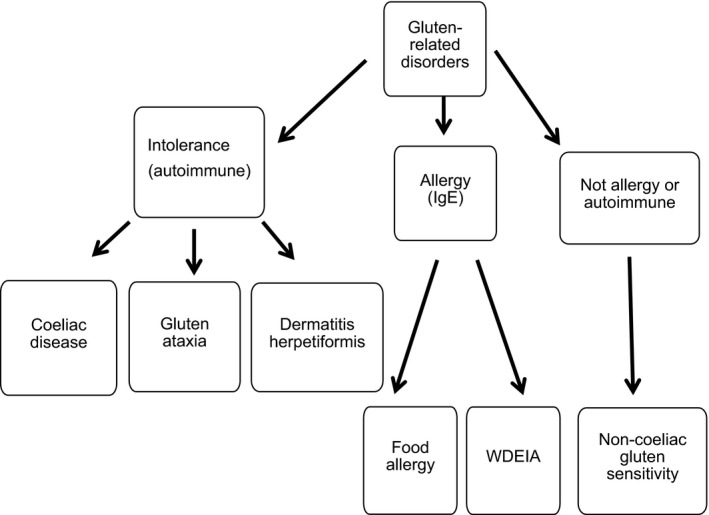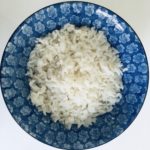There has been an increase in adverse reactions to wheat and gluten. I find this chart to be a very helpful visual to explain the spectrum of wheat and gluten-related disorders in general, along with the corresponding definitions (which I have abbreviated) below. There are many, many symptoms of celiac disease and gluten intolerance that are not included here — for a more detailed list, go to the Symptoms page.

Coeliac (or Celiac) disease
Coeliac disease (CD) is an autoimmune condition, which affects the small intestine, resulting in malabsorption, weight loss, fatigue, abdominal pain, vomiting and diarrhoea. Consequently, patients with CD suffer from nutrient deficiencies including iron anaemia and folate deficiency. However, individuals may also be asymptomatic or present only mild symptoms.
Gluten Ataxia
Celiac disease may be associated with neurological conditions, with peripheral neuropathy and gluten ataxia (GA), in which the cerebellum is damaged, being the most common. Their prevalence has not been established but Hadjivassiliou et al. (2002) have estimated that neurological dysfunction may occur in about 6–10% of patients presenting with gastrointestinal symptoms.
Dermatitis Herpetiformis
Dermatitis herpetiformis (DH) is a form of Celiac Disease, which presents as a chronic skin disease.
Wheat allergy
Allergies are hypersensitive responses to foreign components, most commonly proteins, and are usually associated with the production of a specific class of antibody called IgE (in contrast to the IgG antibodies which are produced in response to most invading pathogens). Symptoms of allergy to ingested wheat products include atopic dermatitis, urticaria (also called hives or nettle rash), and respiratory and gastrointestinal symptoms.
Wheatâ€dependent exerciseâ€induced anaphylaxis (WDEIA)
The best characterised form of wheat allergy is wheatâ€dependent exerciseâ€induced anaphylaxis (WDEIA). This is a type of allergic response, which is triggered by the ingestion of food followed by physical exercise, with wheat and crustaceans being the commonest causes
Non-Coeliac Gluten Sensitivity
In recent years, an increasing number of patients have reported symptoms related to wheat consumption, which are not classical allergic or autoimmune responses. This has led to the definition of a new condition called ‘nonâ€coeliac gluten sensitivity’ (NCGS) (Sapone et al. 2012). The range of symptoms varies widely, including gastrointestinal symptoms, tiredness, headache, dermatitis, pains in muscles and joints, depression, anxiety and anemia, and it is not clear whether NCGS represents a single syndrome or a range of conditions (Sapone et al. 2012). It is therefore best defined in negative terms: as a reaction to gluten (or wheat) when both CD and allergy have been excluded (Aziz et al. 2012; Sapone et al. 2012).







Ruth White says
Thank you so much Alison. I’m so thankful for sharing this with the public. A lot of people think this not a true problem. I have the Non-Coeliac Gluten Sensitivity. Pleople treat you different, when you can’t eat like they do. And actually, I eat healthier then most people, because I have to watch what I eat. This is so thoughtful to educate the public.